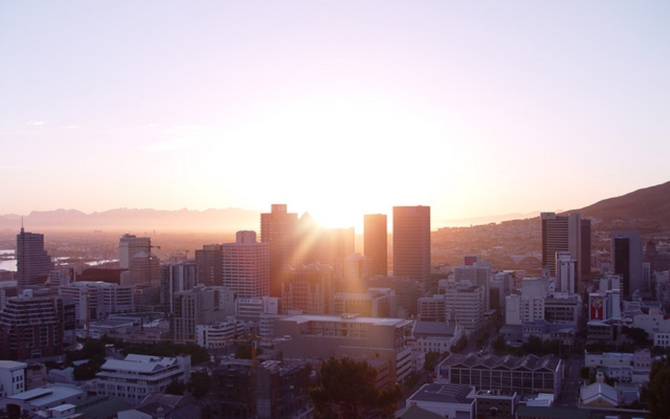Cape Town has opened South Africa’s first high-rise office building for more than two decades. It’s hoped the completion of the 32-floor Portside Tower will now trigger a return of international business investment to the republic.

“Investing in a skyscraper of Portside’s magnitude is the ultimate symbol of confidence in South Africa’s economic future and that of Cape Town’s business district in particular,” said Robert Silke, a partner at Louis Karol Architects whose company co-designed the R1.6bn (£90m) structure.
“Portside signifies the first sizeable capital injection into a commercial business district after more than 40 years of apartheid town planning and subsequent corporate exodus that has left South Africa’s inner cities ravaged,” he added.
Silke was also confident that other companies and investment funds would follow Old Mutual and FirstRand’s lead by adding more modern, high-rise buildings to his country’s inner-city skylines. The 26-floor Safmarine Tower — another Old Mutual development — was the last Cape Town skyscraper completed in 1993.
Faieda Jacobs, regional manager for the Old Mutual Property group, confirmed the new tower would house three divisions of FirstRand Bank including FNB, RMB and Wesbank. The group will occupy half of Portside’s 57,000sq metres. Negotiations were already underway with a separate company for the lease of four additional floors totalling 11,000sq metres. At R185 (£10.5p) per square metre the building’s rents have already set a new record for Cape Town’s inner-city office market
Portside is the first of the country’s skyscrapers to be awarded a five star design award under the Green Building Council, South Africa’s eco-rating system. The building’s green credentials include LED lighting and movement sensors that control air-conditioning and lighting system as staff move around within the offices.
The 142m building has also attracted the attention of the Council on Tall Buildings and Urban Habitat which claimed South Africa’s emerging prominence as the commercial gateway to the African continent would be a key incentive for more 100m-plus developments in the next decade.
“The bulk of the country’s tall buildings are outdated as they were built in the 1970s,” commented the council. “As such, much of the stock falls short of the accepted current standards for sustainability, health and safety, which has an impact on its redevelopment potential.”
“Given the rapid increase in urbanisation within South Africa there is the likelihood of significant urban regeneration being urgently needed over the next decade and involving the recycling or redevelopment of some of its tallest buildings,” the global body added.
Portside is now the country’s seventh tallest building, excluding telecommunications structures. The 50-floor Carlton Centre in downtown Johannesburg and Hillbrow’s once-swanky Ponte City, both completed in the 1970s, still rank as its two tallest towers at 223m and 173m respectively.
South Africa, however, lags a long way behind the world’s other skyscraper hot spots such as Dubai, China, Hong Kong and Malaysia, where buildings higher than 450m are not uncommon. The world’s tallest building, the mixed-use Burj Khalifa, completed in 2010 in Dubai, has 163 floors and is 828m high.
Previous Post
Adderstone gets Green Light to expand Business Park